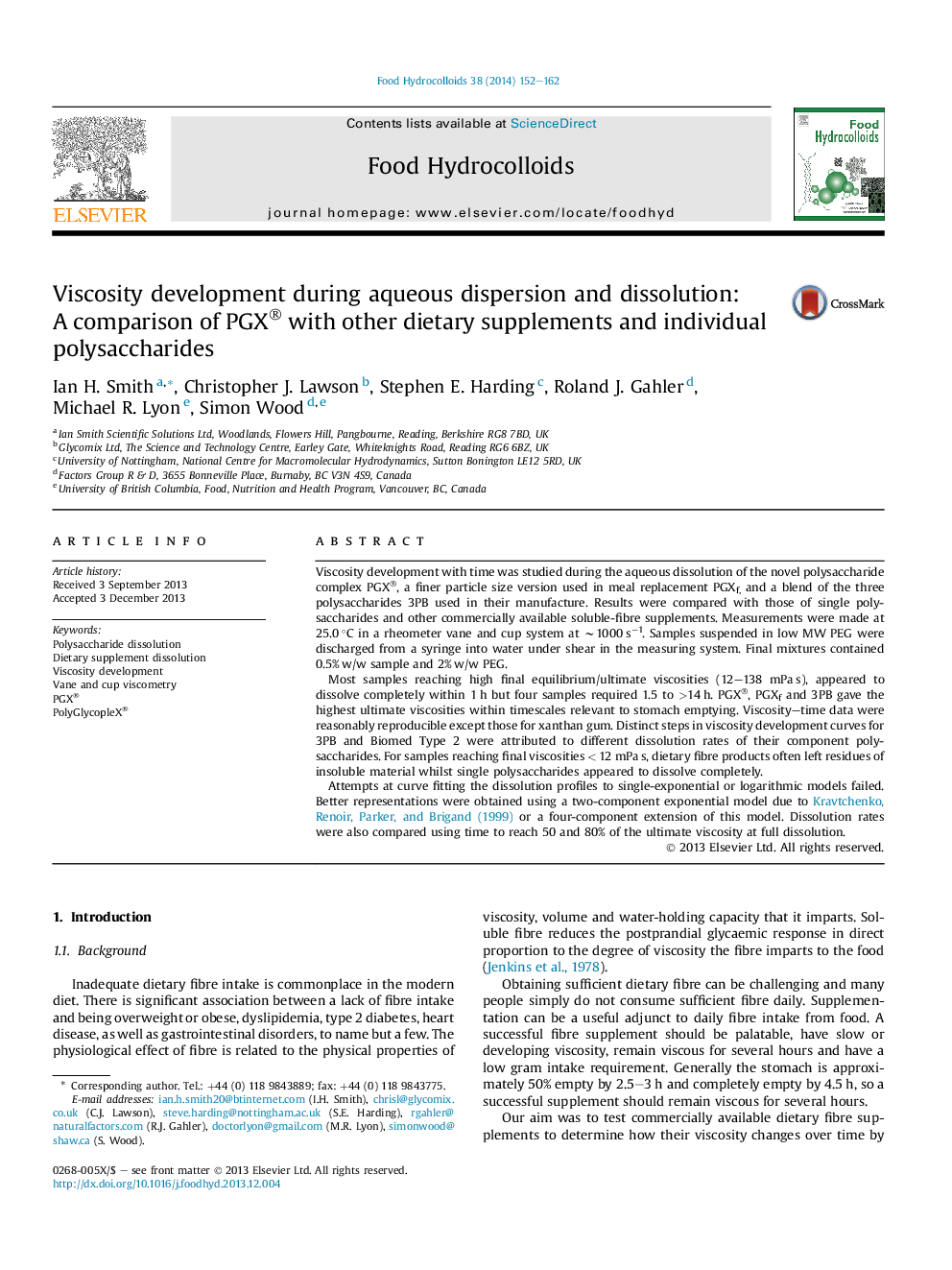| کد مقاله | کد نشریه | سال انتشار | مقاله انگلیسی | نسخه تمام متن |
|---|---|---|---|---|
| 604507 | 1454437 | 2014 | 11 صفحه PDF | دانلود رایگان |

• Viscosity development with time for a range of dietary supplements added to water.
• Measurements at 0.5% in vane and cup rheometer at ∼1000 s−1 and 25 °C.
• PGX®, PGXf and 3PB best performers within timescales relevant to stomach emptying.
• Dissolution kinetics were complex but some fitted multicomponent exponential model.
Viscosity development with time was studied during the aqueous dissolution of the novel polysaccharide complex PGX®, a finer particle size version used in meal replacement PGXf, and a blend of the three polysaccharides 3PB used in their manufacture. Results were compared with those of single polysaccharides and other commercially available soluble-fibre supplements. Measurements were made at 25.0 °C in a rheometer vane and cup system at ∼1000 s−1. Samples suspended in low MW PEG were discharged from a syringe into water under shear in the measuring system. Final mixtures contained 0.5% w/w sample and 2% w/w PEG.Most samples reaching high final equilibrium/ultimate viscosities (12–138 mPa s), appeared to dissolve completely within 1 h but four samples required 1.5 to >14 h. PGX®, PGXf and 3PB gave the highest ultimate viscosities within timescales relevant to stomach emptying. Viscosity–time data were reasonably reproducible except those for xanthan gum. Distinct steps in viscosity development curves for 3PB and Biomed Type 2 were attributed to different dissolution rates of their component polysaccharides. For samples reaching final viscosities < 12 mPa s, dietary fibre products often left residues of insoluble material whilst single polysaccharides appeared to dissolve completely.Attempts at curve fitting the dissolution profiles to single-exponential or logarithmic models failed. Better representations were obtained using a two-component exponential model due to Kravtchenko, Renoir, Parker, and Brigand (1999) or a four-component extension of this model. Dissolution rates were also compared using time to reach 50 and 80% of the ultimate viscosity at full dissolution.
Figure optionsDownload as PowerPoint slide
Journal: Food Hydrocolloids - Volume 38, July 2014, Pages 152–162